Spring into Direct
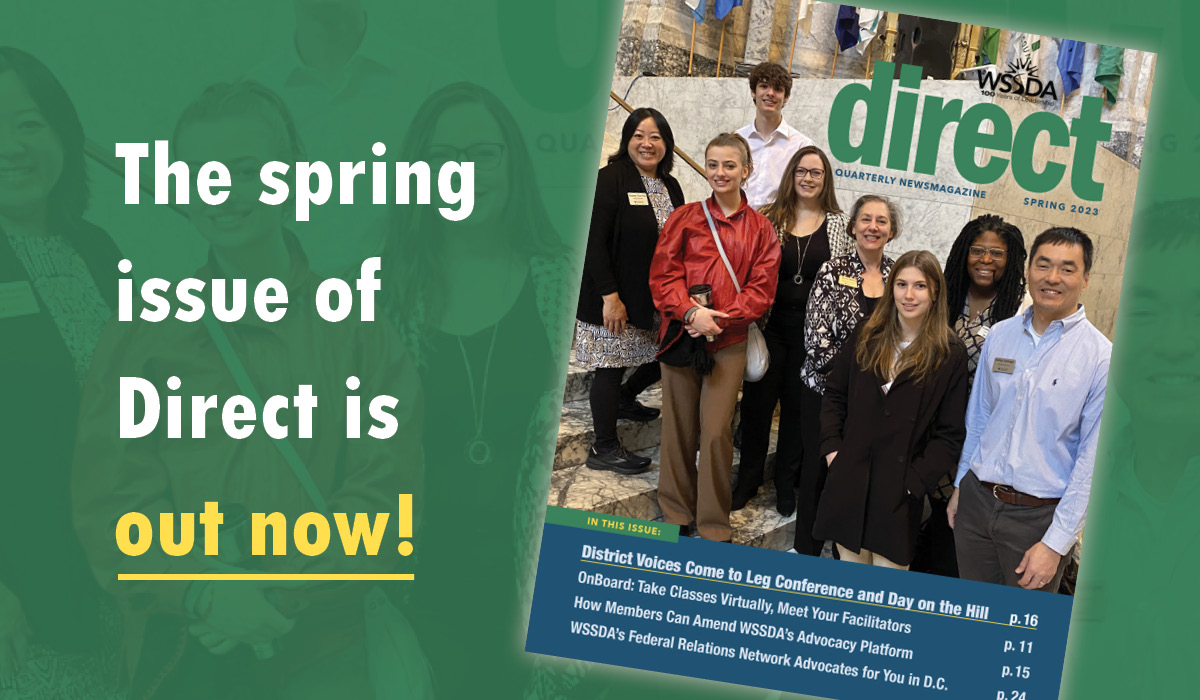
Learning & advocating
Share the spring issue of WSSDA Direct with your friends and colleagues, or peruse back issues on a Sunday afternoon. In this edition, Shankar Vedantam, author of The Hidden Brain, offers advice in “The Art of Persuasion”. Drawn from the Legislative Conference keynote speech, Vedantam highlights the work of notable researchers in the field of psychology.

Other articles include
Some of the highlights of this issue include: “How school boards direct WSSDA’s advocacy”, “Virtual school director candidate workshops”, and a staff favorite, “Big smiles for little faces”, in which past president, Aurora Flores discusses the importance of child literacy, and the elementary school book drive at WSSDA’s Annual Conference.
Elevating Student Voice: Adding Student Representation to School Boards
Student Perspective
What is the one thing that only a student can provide to a school board? Perspective. The forces that shape a generation, such as radio, television, the internet, cell phones, social media, change over time. Only a K-12 student can tell you how it feels to be a kid in 2023. In school districts across the state, momentum is growing to include student voice in the decision-making process. More school boards are adding student representatives.
“When board members approach me with ideas, questions, etc., I like to ask, ‘Well, have you asked the students in your district?’ This normally sparks a conversation,” said Logan Endres, founder of the WSSDA Student Board Representatives Network. A strategic advocacy specialist, Endres knows of several Washington school districts with student representation going back as far as 2004. Today, he estimates that at least 142 districts include student board representation. “The feedback has been incredible! I hear positive and encouraging comments from student representatives, district board members, and staff alike about the benefits.”
Student Advisory Committees
In addition to board representation, many districts create superintendent student advisory committees drawn from elementary, middle, and high schools. “Although student representatives can’t actually be a voting member of the school board, through student advisory votes, you can see if students really like the policies and initiatives that are going through the board,” said Tejasvini Vijay, a student board representative at Riverview School District.
Policy Decisions
Erin Jones, former assistant state superintendent for student achievement in Washington and one-time educator, said, “What I realized is we were not talking to the people who were most impacted by legislation. So you had really well-intentioned, well-meaning decision-makers, whether in our state Legislature or district superintendents, making policy about people they were not talking to. We cannot possibly write good legislation if we’re not hearing from the people who will be most impacted by it.”
Erin Jones encourages school directors to reach out to students for feedback, and let them know that they genuinely want to get to know and hear from students. She said, “It becomes part of the practice of running school board meetings to listen to students. There are ways to listen to student advisory boards and communities, but I think having members on the board, even if they can’t vote and listening to them, that’s really important.”
There was only one student representative when Hillary Seidel joined the Olympia School District Board of Directors five years ago. Today, four students sit on the board, one for each high school. Seidel said, “When the pandemic hit, we were so lucky to have two very active and engaged student representatives who really led a lot of the conversation about what students were needing most, how they were feeling, and how we should be directing our funding and our work towards remote learning.”
“I think being able to represent students from preschool all the way to the 12th grade is such an awesome opportunity,” said Elise Garza, a senior and student board representative at Othello School District. “We get to voice everybody’s opinion and just make sure that we’re really representing all of those people…I had a student come up to me and share an experience that they had … and I reiterated to my board. ‘Hey, this is going on.’ And, I think the student wasn’t the only person feeling that way. So we made some changes, and it really helped students in our district feel more included.” Garza adds, “As a student, you should remember that your voice matters.”
Supporting Student Board Representatives
Involving student voice is only the first step. Districts and boards need to make representatives feel safe, trusted, respected, and that their voice will impact the policy decisions. Sometimes students face pushback from the community, and they need the support of the school board and the administration. “They [students] are designing social media campaigns. They are working on focus group protocols, and they are speaking for students with courage and tenacity when it comes to advocating for that equitable education that all our students deserve…And it’s not always easy for them,” said Seidel. “So, if you do have student representatives on your board and you empower them to do this meaningful and important work, you also need to be prepared to support them when the work that they are doing is difficult…”
Policy impacts different students in different ways, and sometimes with unforeseen consequences. The best way to understand how district decisions impact kids is to include student board representatives from a variety of different backgrounds. “You don’t have to speak English as a first language for your voice to matter,” said Erin Jones. “You don’t need to be a straight ‘A’ student for your voice to matter. You don’t need to be in DECA. You need to want to make your school community the best place it possibly can be.”
A FREE and Effective Resource to Strengthen Board-Superintendent Teams
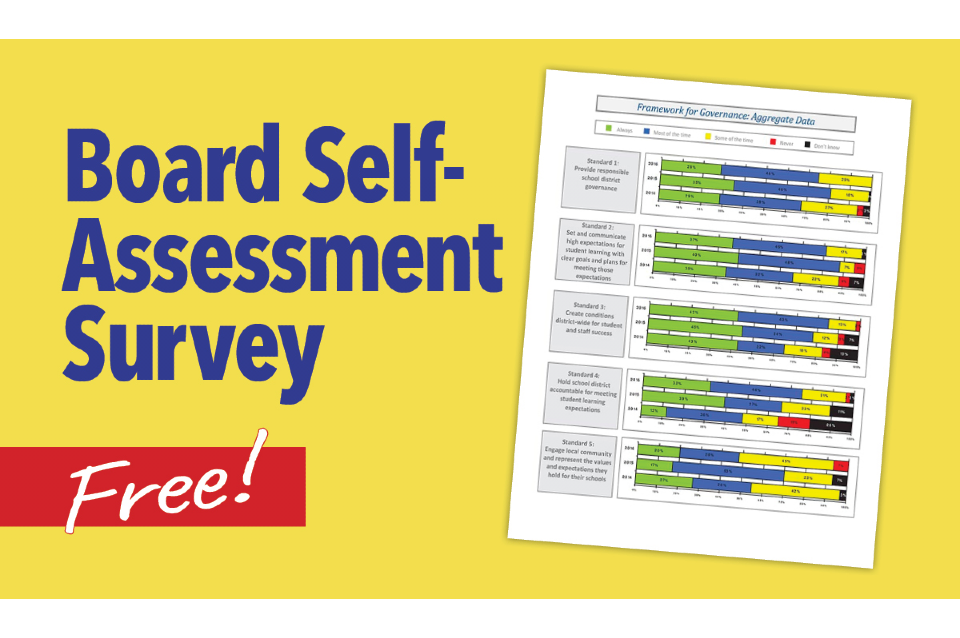
Early in the year is a great time for school boards to assess their performance with WSSDA’s free online Board Self-Assessment Survey. The benefits of the survey include:
- Helping school boards assess and strengthen their performance in governing for improved student learning by examining their own practices.
- Research-based and scientifically validated, the survey is based on the Washington School Board Standards.
- It’s FREE to all public school boards in Washington state.
- It’s anonymous.
- It is easy to take and can be completed from any computer or mobile device in 15-20 minutes.
- Once completed, WSSDA provides a detailed report for the board-superintendent team to read and discuss.
- Taking it annually allows a school board to focus on areas to strengthen and track progress over time.
Post-survey, WSSDA also has an excellent process to help board-superintendent teams unpack the results and make sense of the feedback. Staff can help boards identify goals and next steps based on the self-assessment results.
Boards can get started today by emailing Christine Najarro to request the survey.
WSSDA Signs on to Joint Statement about Funding for Special Education, Meals, Transportation, and School Staff
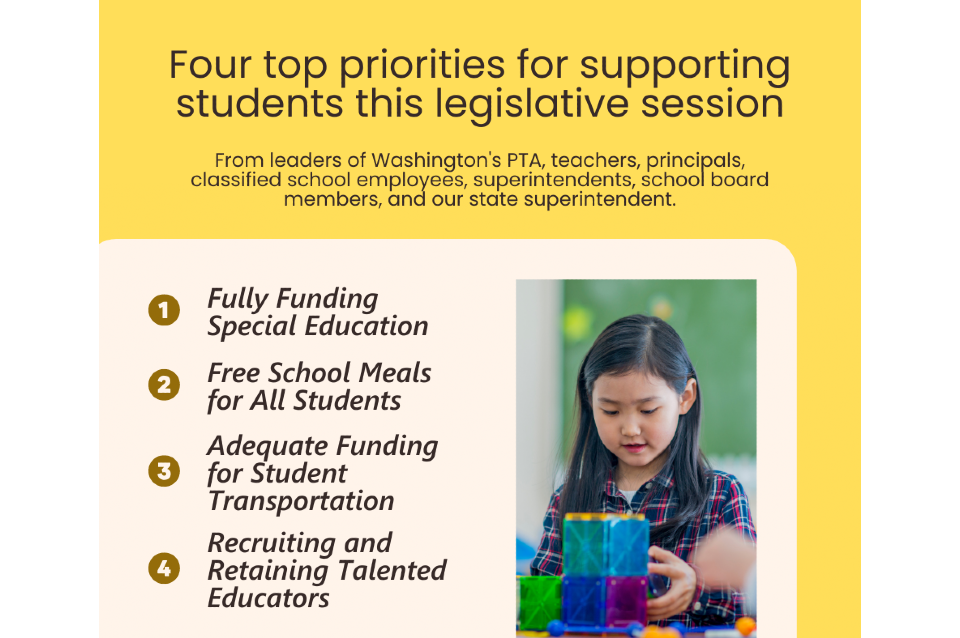
Yesterday, WSSDA Executive Director Tim Garchow signed on to a joint statement published by the Office of the Superintendent of Public Instruction (OSPI). The statement calls for the Legislature to invest in special education, meals, transportation, and school staffing. The leaders who signed the statement represent the Washington State PTA, Public School Employees of Washington labor union, OSPI, Washington Association of Educational Service Districts, Washington Association of School Administrators, Washington Education Association, and the Association of Washington School Principals.
School Board Legislative Representatives Lead the Way
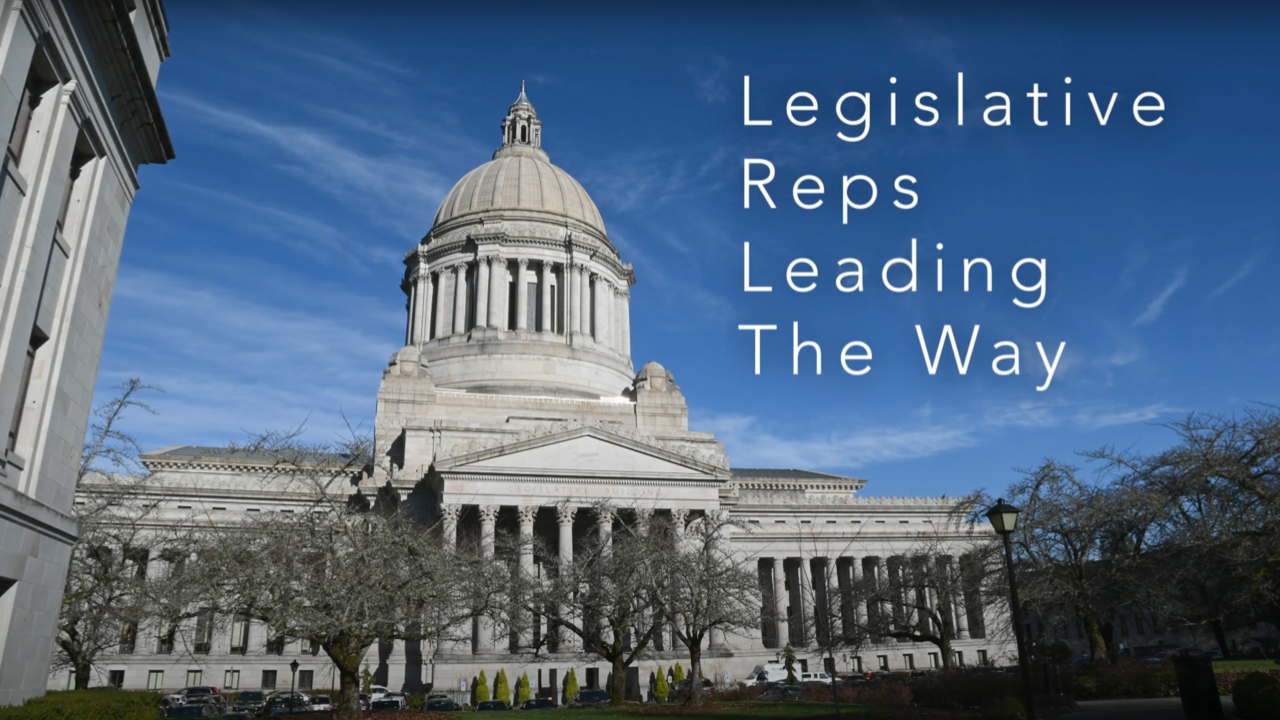
School boards select a president or vice president, but did you know they also select a legislative representative or “leg rep”?
School board leg reps monitor legislation that could impact public schools and inform their board of emerging issues and advocacy opportunities. They also serve as their board’s liaison with the Washington State School Directors’ Association (WSSDA) on legislative matters.
With WSSDA, the leg reps may represent their board at WSSDA’s annual General Assembly, conveying local views and concerns to their statewide peers. When appropriate, the legislative representative obtains their board’s support for a legislative proposal to be submitted to the assembly and then supports it at the event.
“I represent a school district with only about 865 students,” said Rainier School Board member Rebecca Stillings, “but at General Assembly, people listen to me and what I have to say about my district and the challenges our students face.”
If successful, a board’s proposal will be adopted by a majority vote at the assembly and added to WSSDA’s advocacy platform.
Another key function of the leg rep is to build relationships with local policymakers and state and federal legislators. Sharing coffee, phone calls, or even arranging legislator visits to local schools are all great ways to build those connections. Since legislators are busy during a session, the off-season or “interim” as it’s called, is usually the best time.
Hear from Current Leg Reps
To learn more, watch the video below or visit wssda.org/legreps.
